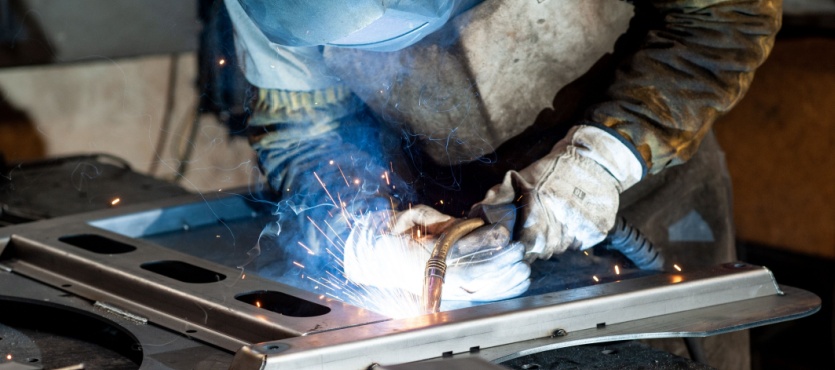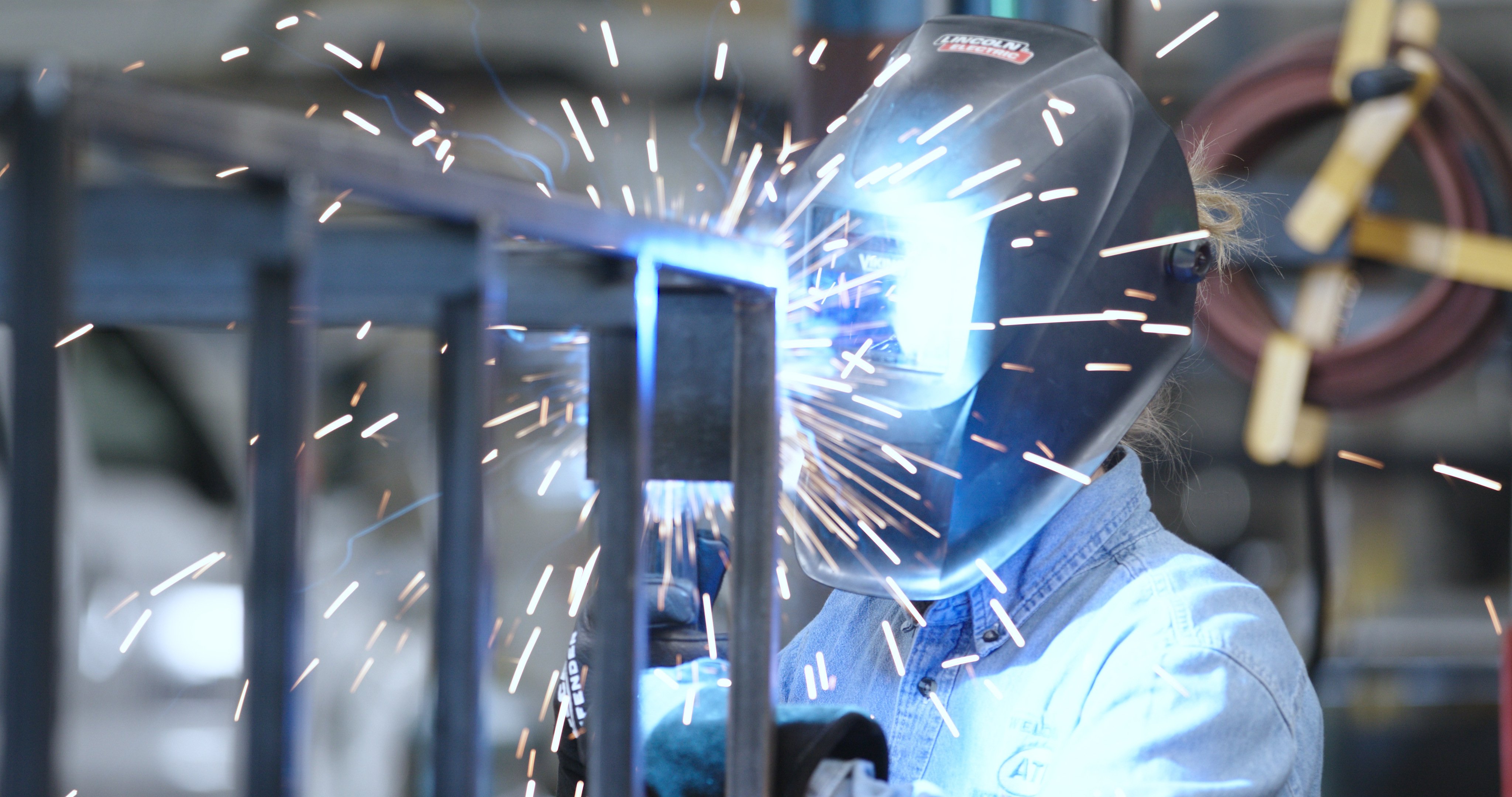What causes cracking in welds and how Montana Mobile Welding and Repair prevents them
Usual Welding Repair Work Issues and How to Address Them Successfully
Welding fixings frequently run into a range of problems that can jeopardize the integrity of the final product. Usual issues include insufficient penetration, porosity, and misalignment, amongst others. Each defect offers unique difficulties that need details methods for resolution. Understanding these problems is vital for welders intending to enhance their results and abilities. This discussion will discover these common welding repair work issues and reliable approaches to resolve them.
Inadequate Penetration
Insufficient penetration occurs when the weld metal stops working to totally fuse with the base product, causing weak joints and possible architectural failures. This issue usually originates from inadequate warm input, inaccurate electrode angle, or incorrect welding rate. Welders might encounter poor penetration as a result of a mistake of the necessary parameters for a particular material thickness or kind. Additionally, contamination on the base material's surface can hinder reliable bonding, exacerbating the issue. To attend to insufficient infiltration, welders should ensure ideal settings on their tools and maintain a tidy job surface area. Regular evaluation of welds is recommended to identify any deficiencies early, enabling for prompt adjustments and the avoidance of compromised architectural honesty in welded settings up.
Porosity
Porosity is a common issue in bonded joints that materializes as little gas bubbles trapped within the weld metal. This flaw can jeopardize the integrity of the weld, leading to reduced toughness and potential failure under stress. Belgrade. Porosity usually arises from contamination, dampness, or improper welding techniques, which enable gases to escape into the molten weld swimming pool. To address porosity, welders must ensure proper surface area prep work, preserve a tidy working setting, and use ideal welding parameters. In addition, choosing the appropriate filler material and shielding gas can alleviate gas entrapment. Regular evaluation and screening of welds can help recognize porosity early, assuring prompt restorative actions are taken, therefore protecting the top quality and dependability of the welded structure
Misalignment
Imbalance in welding can emerge from various elements, consisting of inappropriate configuration and thermal growth. Understanding the origin is vital for effective resolution. A number of modification techniques are offered to realign components and guarantee architectural integrity.
Sources of Misalignment
Welding imbalance typically originates from a variety of underlying problems that can compromise structural stability. One main reason is inappropriate fit-up of parts prior to welding, which can cause voids and unequal surfaces. Variations in thermal expansion during the welding procedure can also cause distortion, particularly if the products being signed up with have different coefficients of expansion. In addition, insufficient securing and fixturing may fail to hold components firmly in position, bring about activity during welding. Badly conserved equipment, including welding makers and tools, may present incongruities in the weld bead, additional adding to misalignment. Driver mistake, stemming from not enough training or experience, can likewise play a substantial role in creating misaligned welds.

Improvement Strategies Available
Resolving misalignment efficiently needs a combination of restorative techniques tailored to the details problems handy. One typical technique is making use of components or jigs to hold parts in the right placement during welding, guaranteeing regular placement. Additionally, preheating the materials can help in reducing distortion and enhance fit-up. For considerable imbalance, mechanical realignment techniques, such as utilizing hydraulic jacks or clamps, can be utilized to fix the position prior to welding. Post-weld warmth therapy may additionally be needed to eliminate anxieties created by imbalance. Mindful examination and modification during the arrangement phase can avoid imbalance concerns from coming to be considerable issues, promoting a smoother welding procedure and improving overall structural honesty.
Distortion
Distortion is a typical challenge in welding that can arise from numerous elements, including uneven heating and air conditioning. Understanding the root causes of distortion is crucial for applying reliable avoidance techniques. Addressing this issue not just enhances structural honesty however also boosts the overall high quality of the weld.
Root causes of Distortion
When based on the extreme warmth of welding, materials often go through adjustments that can result in distortion. This sensation mainly arises from thermal expansion and contraction throughout the welding process. As the weld location warms up, the product expands; upon cooling, it contracts, which can create inner anxieties. On top of that, unequal heating across a workpiece can exacerbate these tensions, resulting in warping or bending. The kind of material also plays a significant function; metals with differing thermal conductivity and coefficients of development might respond differently, causing uncertain distortions. In addition, poor joint layout and inadequate fixturing can add to misalignment during welding, raising the possibility of distortion. Comprehending these reasons is important for effective welding repair and avoidance approaches.
Prevention Techniques
Efficient avoidance methods for distortion during welding emphasis on managing warmth input and making certain appropriate joint layout. Keeping a constant warm input assists to decrease thermal expansion and contraction, which can result in distortion. Making use of techniques such as pre-heating the workpiece can likewise lower the temperature gradient, promoting consistent heating. Additionally, selecting proper joint designs, such as T-joints or lap joints, can improve stability and minimize stress and anxiety focus. Carrying out proper fixturing to protect the work surfaces in location further help in maintaining alignment during the welding process. Staggered welding series can disperse heat more equally, avoiding local distortion. By using these techniques, welders can substantially decrease the possibility of distortion and enhance the overall high quality of their welds.
Cracking
Cracking is a common concern come across in welding repair work, commonly resulting from various variables such as improper cooling rates, material option, or insufficient joint preparation. The event of cracks can substantially jeopardize the honesty of the weld, bring about prospective failings throughout operation. To address this concern, welders have to initially evaluate the origin creates, ensuring that products are compatible and appropriately chosen for the details application. Furthermore, controlling the air conditioning rate during the welding process is vital; quick cooling can generate stress and cause cracking. Correct joint style and preparation additionally add to lessening the danger. Carrying out these strategies can enhance weld quality and sturdiness, ultimately reducing the probability of splitting in completed weldments.

Incomplete Combination
A considerable issue in welding repair services is incomplete fusion, which occurs when the weld metal does not effectively bond with the base product or previous weld passes - Montana Mobile Welding and Repair Belgrade. This problem can bring about weaknesses in the joint, possibly jeopardizing the stability of the bonded structure. Aspects adding to incomplete combination include inadequate warm input, inappropriate welding method, and contamination of the surface areas being signed up with. To resolve this problem successfully, welders ought to assure correct pre-weld cleansing and surface prep work, in addition to change their welding parameters to attain ample penetration and fusion. Normal examination during the welding procedure can likewise help recognize incomplete blend early, permitting timely corrective measures to enhance the total quality of the weld
Overheating
While welding repair work can boost structural honesty, overheating provides a substantial challenge that can bring about product destruction. Excessive warmth during welding can alter the mechanical buildings of metals, leading to minimized strength, increased brittleness, and bending. This sensation is specifically critical in high-stress applications where architectural dependability is paramount. Recognizing overheating can involve aesthetic evaluations for staining or distortion, along with keeping track of temperature level throughout the welding process. To mitigate the threats related to getting too hot, welders should utilize proper techniques, such as controlling warm input, readjusting travel rate, and making use of appropriate filler materials. Additionally, carrying out pre- and post-weld warm treatments can help bring back material properties and enhance the total quality of the repair service, guaranteeing long-lasting performance and safety.
Frequently Asked Concerns
What Are the Common Indicators of a Welding Flaw?

How Can I Test My Welds for High quality?
To examine welds for quality, one can make use of visual evaluations, ultrasonic testing, and radiographic methods. Each technique assures architectural stability, identifies issues, and confirms adherence to specified standards, eventually improving the dependability of the bonded joints.
What Security Precautions Should I Take While Welding?
When welding, one should prioritize security by wearing appropriate individual protective devices, making certain appropriate ventilation, safeguarding combustible products away, keeping a tidy work area, and knowing environments to prevent injuries and crashes.
Can I Fix a Weld Without Redoing the Entire Joint?
Repairing a weld without redesigning the whole joint is possible, depending on the damage (Montana Mobile Welding and Repair Fabrication). Strategies such as grinding, adding filler material, or using a welding process can successfully attend to certain defects while preserving the bordering framework
What Equipment Are Important for Efficient Welding Services?
Necessary tools for effective welding repair services include a welding device, cable brush, grinder, safety equipment, clamps, and filler materials. Each tool plays a crucial duty in ensuring quality and safety during the repair service procedure. Porosity typically occurs from contamination, moisture, or improper welding strategies, which permit gases to get away right asme ix into the molten weld pool. Badly maintained equipment, consisting of welding devices and devices, might introduce disparities in the weld bead, more contributing to imbalance. When subjected to the intense warmth of welding, materials often go through modifications that can lead to distortion. Breaking is a typical problem run into in welding repair services, usually resulting from different factors such as inappropriate air conditioning prices, material option, or inadequate joint prep work. A considerable concern in welding repairs is insufficient blend, which occurs when the weld steel does not adequately bond with the base material or previous weld passes.